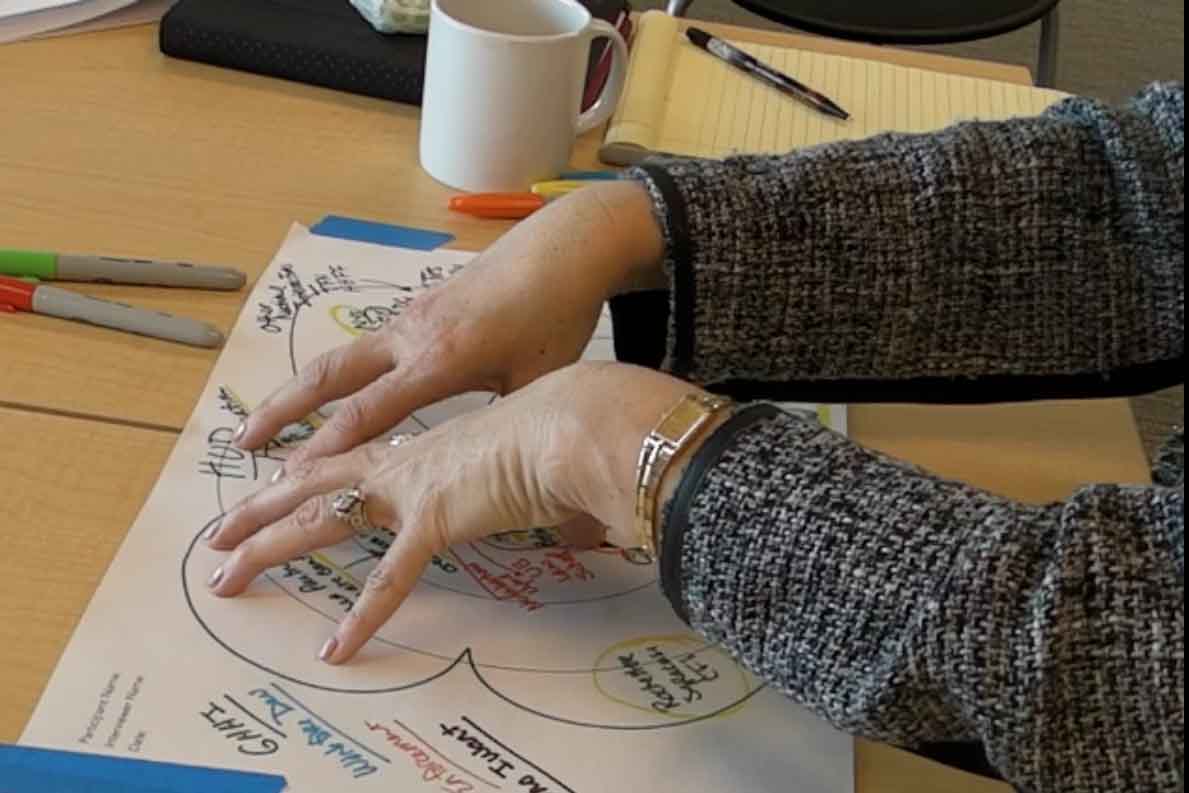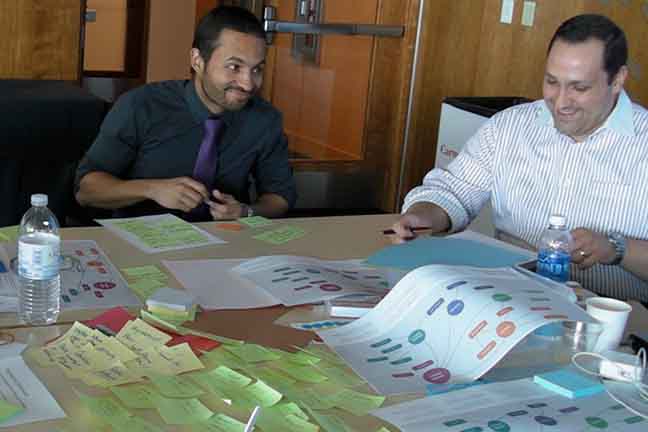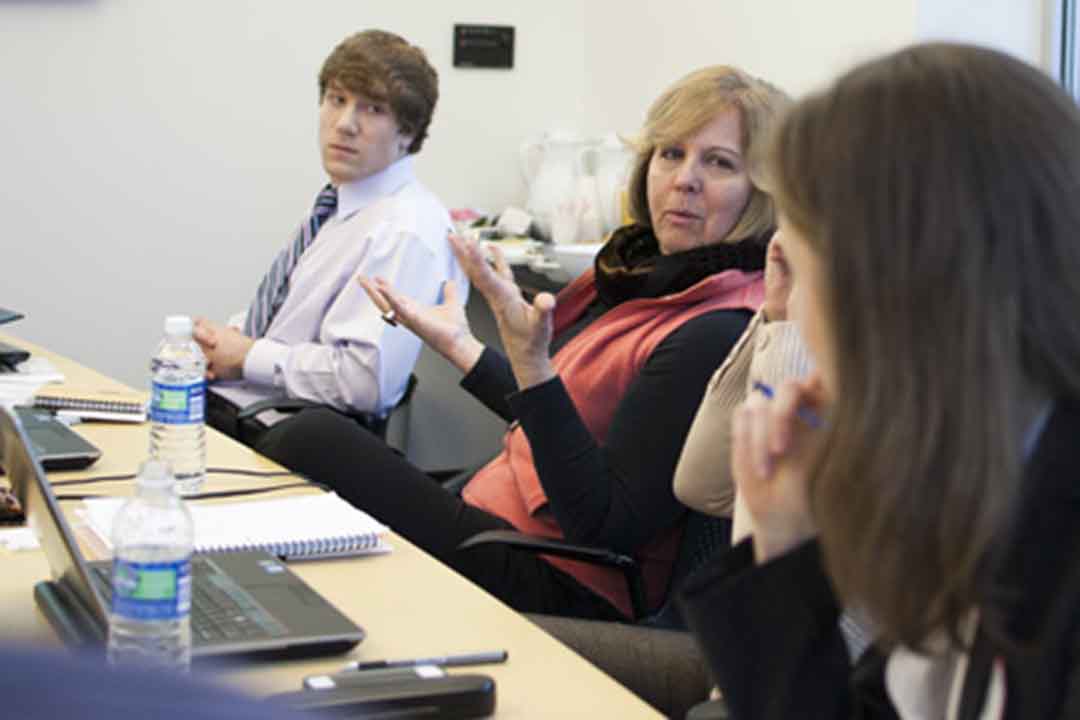THE CHALLENGE
Create a product to serve the Crossland Group's clients
The Crossland Group advises leaders of organizations that range in size, and across industry and sector. Our team needed not only to find a common ground among these diverse entities, but also to design a solution that was consistent with The Crossland Group's high-touch services and brand identity.
Our findings and final design are subject to a non-disclosure agreement due to the product's pending release. I am happy to show you a copy of our research and design reports upon request. Information about our process can be found below and on my team's project website.
THE PROCESS
Needfinding and Domain Research
During the spring semester, my team and I interviewed 26 non-profits and for-profit executives. Their organizations varied in scale (from 6 people to 60M people) and reach (local to global). We also researched technologies and academic disciplines that enable organizations to manage and analyze relationships, such as customer relationship management (CRM) systems and social network analysis (SNA). When we consolidated our research, we discovered these very different leaders and organizations faced similar challenges.

One of our research methods was people mapping; participants drew their organization's relationships as part of retrospective storytelling.
Visioning
At the end of the spring semester, we presented these findings to our sponsor and brainstormed with them how we could help their clients deal with shared internal challenges. This process, called visioning, helped us frame possible directions for the project.

Using our spring research presentation as inspiration, we ideated with the Crossland Group leadership. Here, Juan and Rey Khachatourian, the Crossland Group's Chief Experience Officer, find time to laugh as they swap ideas.
Concept Validation, Iterative Design & Usability Testing
We then evaluated whether we had identified a problem space and conceptual solutions that resonated with the Crossland Group's clients. We use validation techniques like speed dating and card sorting with organization leaders to narrow the project's focus. Their feedback on our ideas began to congeal and the direction our design should take became clear.
Though the project was clear, we did not jump straight to coding. Our high-fidelity prototype evolved over multiple iterations. We started with low-fidelity prototypes made from paper and gradually came to the final design.
We refined our design by testing each version with users. However, I determined that we should take a two-pronged approach. We recruited everyday people so we could iron out general usability problems and focus the testing sessions we had with executives on gathering their impression on whether the prototype would help their organizations.

We found this usability testing participant in a coffee shop. People like him helped us iron out issues before we tested our prototypes with organization leaders.
OUTCOME
The Crossland Group is making our product, Triple Point.
We presented the high-fidelity prototype to the Crossland Group at the end of the summer. Our documentation included both design specifications and a discussion of how usability testing led to our final design. We also outlined several long-term visions for product development.
If you are interested in learning more, please contact me at tucker [dot] judith [at] gmail [dot] com.

Doug Roche and Teri Riddle, CEO and Founder of the Crossland Group. (I am pictured far right.)





